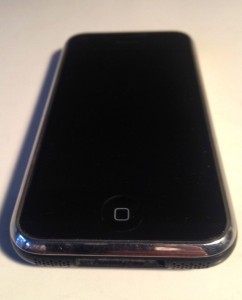 I remember distinctly the day I got my first-generation iPhone in 2007. I was the first in my law office to get one, and when I figured out how the phone’s email system worked with our internal system, then I realized I could have my assistant send documents to me so I could review them on the phone and forward them to others. The iPhone quickly became an indispensable part of my legal practice.
I remember distinctly the day I got my first-generation iPhone in 2007. I was the first in my law office to get one, and when I figured out how the phone’s email system worked with our internal system, then I realized I could have my assistant send documents to me so I could review them on the phone and forward them to others. The iPhone quickly became an indispensable part of my legal practice.
I thought of how my relationship to this device has evolved and strengthened over the five-year period while reading a recent post on iPhoneJD.com, “AmLaw 2012 Survey Shows Strong iPhone, iPad Support at the Most Profitable Law Firms.” It reported on the AmLaw study finding that in 2008 only 5% of the most profitable firms in the US supported the iPhone, which increased to 99% in 2012. This is a remarkable sea change in the legal field where Blackberrys (aka Crackberrys) had almost 100% of the market prior to 2007 in larger firms. It shows how fast technology can change entire sectors of the legal field in an extremely short period of time.

The study also addressed the use of tablets in major firms, and found that in almost two-thirds of the AmLaw 200 firms, over 25% of the firm’s lawyers are using tablets, and this increases to over 50% in approximately 10% of the firms. Jeff Richardson, the author of iPhoneJD, suspects that “tablets” really means iPads since neither he, nor I, have seen any prevalent use of any other tablet in the legal field, at least as of yet.
What these statistics taken together show is an explosion of use in the legal community of these devices, well beyond the “early adopted.” Smartphones and tablets are becoming ubiquitous in the industry and changing the way we do litigation in myriad ways.
In particular, the iPad is changing the way we as attorneys can, and should, present our cases. Numerous studies show that people understand and remember information far better when it is provided to them both visually and orally. With the iPad, attorneys now have the ability to personally, and easily, access all their case information and visually show that information for better impact and information retention. The ease with which attorneys can now use programs like TrialPad, Exhibit View, or the new free iPad version of TrialDirector, means there is simply no excuse for not visually showing your case to mediators and juries.
If you want to learn how to use any of these trial presentation software for your iPad, I recommend downloading the iBook by Ian O’Flaherty of Lit Software, the maker of the very good trial presentation software TrialPad. His free iBook explains how to use TrialPad with its new features. Click here while you are using your iPad to download the iBook to your device.
An article I wrote recently for The Jury Expert, “Getting the Most Out of Your iPad During Litigation,” gives step-by-step tips on using your iPad in your law practice. Additionally, I’m happy to come into law firms and give an informal, hands-on, 40-minute presentation that shows how to optimize your iPad for use in your law practice, and how and why you should visualize your case with the help of the iPad. I’ve made this presentation to groups of attorneys at law firms and bar associations with very positive feedback. Please contact me if you’re interested in a similar presentation for your firm.
Call for comments: How are you and your colleagues using an iPhone and/or iPad in your law practice?
If you’d like to receive updates from this blog, please click to subscribe by email.

